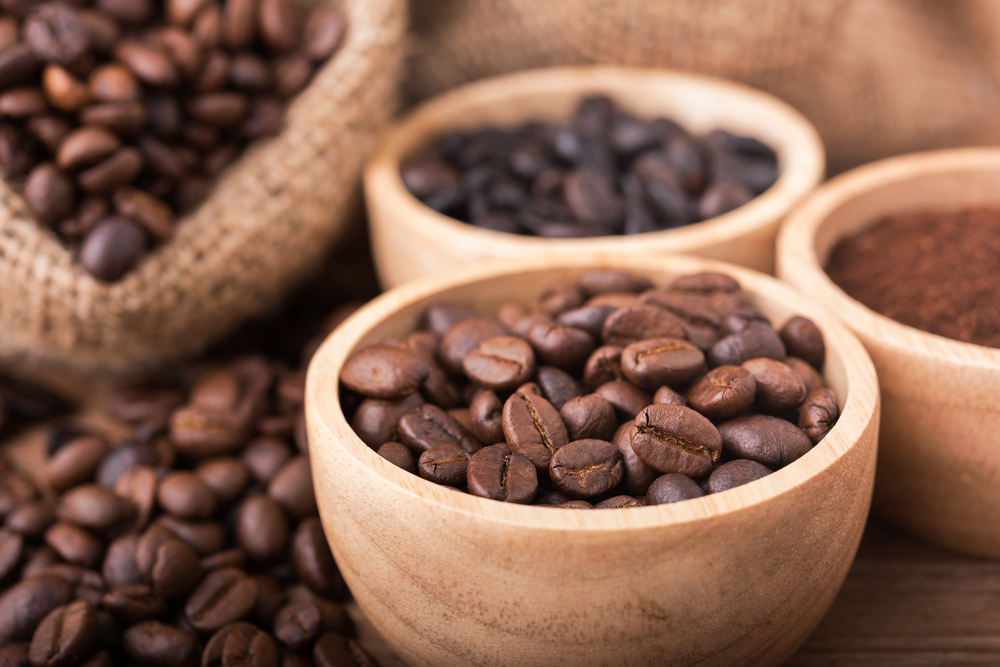
A Complete Guide To Coffee Blends
A Complete Guide To Coffee Blends

There are terms you'll likely come across if you enjoy drinking coffee, the terms are: "single-origin coffee" and "coffee blends". In this article, we'll make you understand what coffee blends are, why coffee lovers drink them, and the differences between coffee blends and single-origin beans.
Coffee blends are a balanced flavour-filled way to kick start your day, but without knowledge of what to look out for when picking blends, you may end up settling for a low-grade blend that lacks the flavour you desire. It is not the kind of coffee you want to kick-start your day.
What is a coffee blend?
A coffee blend is a mixture of two or more origin coffee beans. The idea behind coffee blends is to take the best qualities from different origins to create a smooth, well-balanced, and tasty coffee. That is to say, the goal of making blends is to analyse the best attributes of each coffee and blend them to create a consistent flavour profile.
These coffees can be from different countries like Mexico, Ethiopia, Zambia, Columbia or they can come from different regions in the same country. For example, Ethiopia Yirgacheffe, Ethiopia Guji, and Ethiopia Sidamo Ardi.
So what are the reasons why coffee drinkers love blends?
Coffee blends are delicious, balanced, and consistent: For some of us, a delicious cup of coffee is the start of our daily routine. We want our first cup to get us activated, not only with caffeine but with a lasting flavour. When coffee beans are sourced and roasted properly, coffee blends deliver a vibrant flavour over and over. This consistent flavour is what coffee drinkers love and expect from a coffee blend.
Complexity: When varieties of elements from different beans are mixed, they offer a rare smooth flavour profile. For example, coffee with a good mouthful (coffee from Brazil) creates a good blend with coffee from Papuan and Mexico which gives you an interesting after-taste.
Benefits for coffee roasters: Coffee blends allow roasters to be creative. Remember, creating blends is not just about throwing a bunch of different beans together and expecting them to taste good. Roasters (like us) thoroughly analyse each coffee's taste and its attributes and experiment with different blend ratios until a perfect blend recipe is found.
Let's see some popular blends and the taste they produce
- Blending a natural Ethiopian coffee with a washed Brazilian coffee can produce chocolatey and citric notes.
- Guatemalan coffee and Zambian coffee can produce a tart apple and almond blend
- Guatemalan, Kenyan, and Mexican beans are a good combination. The bright acidity of Guatemalan coffee blends perfectly with the floral aromas of Kenyan coffee. When the earthy, full-bodied Mexican coffee beans are added, the blend turns into a well-rounded combination of smooth flavours.

- Another nice blend to try is Ethiopian and Sumatran coffee beans. The exotic, fruity aroma of the Ethiopian coffee blends into the Sumatran beans that have earthy, spicy, and woody notes. This results in a low acidity blend with a full body and a complex contrast between earthy and fruity notes. You see, there is a long list of coffee blends to be created with single-origin coffee from around the world.
Do you want to try some coffee blends already? SHOP NOW.
Let's get to the next part
What's the difference between coffee blends and single-origin coffee?
As we mentioned earlier, coffee blends differ from single-origin coffee. Coffee blends are beans that are mixed from different locations while single-origin coffee as the name implies, is coffee that is solely from one origin like Brazil or Ethiopia. Since they are sourced from only one place, they tend to be available exclusively at certain times of the year depending on the growing season of that location. Single-origin coffee is mostly appreciated by coffee "aficionados" who like tasting a particular flavour from a specific region.
Some popular single-origin coffees are
Ethiopia: The coffee beans from here, have a gentle lime-like acidity, a mild fruity flavour, and an intense blueberry aroma.
Guatemala: It has a bright red apple-like acidity with mild floral aromas, a smooth chocolate flavour, and a pleasant honey sweetness.
Sumatra: The coffee beans from here, have a mild citrus tang with a pleasant earthy flavour, a refreshing pine aroma, and a gentle molasses sweetness.
Peru: The coffee beans from here have a crisp hibiscus acidity with a gentle fruity flavour, rich floral aroma, and a pleasant fruity sweetness. Note that single-origin beans tend to be roasted to light or medium to get the maximum flavours. If it is roasted darker, it might bring out bitter flavours that can overwhelm the unique flavour of the beans.
Single-origin coffee and coffee blends are both delicious. However, these differences make people prefer one of them to the other.
Availability: Most people love coffee blends because they are usually available to consumers all year while single-origin coffee is subjected to season. A single-origin coffee may have a mind-blowing taste one season and produce another flavour the next season.
Traceability: Many coffee drinkers prefer single-origin coffee to blends because they can be traced directly to one source. That is, they can pinpoint the exact location where the coffee came from. It allows them to appreciate the finer nuances of the taste. But to accommodate seasonality and matching flavour profiles, the source of a coffee blend can change over time.
Things to look out for when picking a coffee blend
When buying coffee blends, you need to look out for these factors-
Flavour profile: Coffee blends can be sweet, light, smooth, acidic, or complex. It all depends on what the roaster wants to accomplish. This means you'll have to choose a blend that most appeals to your personal flavour preference and enjoy!
Roast date: Make sure the coffee blend has a roast date and an expiry date. Coffee blends always taste better when they are consumed within 1-4 weeks after roast. If the coffee is stale, it can lose its delicious and fresh flavour. We advise that you buy coffee blends that have been recently roasted to get the best results.
Buy freshly roasted coffee blends from coffee hero to get that taste you are looking for.
Buy whole beans: You must buy whole coffee blends for brewing instead of using grounds because coffee begins to lose its freshness 30 minutes to 1hour after grinding. If you choose to use already ground coffee, you might be stuck with dull flavours or stale coffee.
Did you know that you can create your blend at home?
You can buy single-origin coffee and create your blend. After all, half the fun in drinking coffee is to expand your final palate. Your final product will come out unique but before you start blending, you should look at these components. They will help you figure out where to start.
Mid palate: This is what most coffee drinkers describe as the flavour of the coffee. You should start with a coffee you enjoy drinking. However, you should be mindful of the flavours you pick. Mid palate requires something juicy so you may want to consider Colombian or Guatemalan coffee.
High notes: This describes the acidity or floral aromas that are usually present in coffee beans. You can find them in Ethiopian and Kenyan coffee beans.
Sweet base notes: This describes what the coffee tastes like after it is roasted, does it have a nutty or caramel-based flavour?. You may want to select Mexican or Brazilian coffee beans that take on these flavours.
Coffee ratio for blending
When you figure out the coffee components you are looking for, you can start. Homemade coffee blends are a matter of trial and error to get what works for you. You can take equal parts of a mid palate and a sweet base note component coffee, then mix it with coffee that has high notes. You can mix 20% of Kenyan beans, 40% of Guatemalan, and 40% of Brazilian. This is just an example, the ratio can also be different like 60:20:20 or 30:30:40, and so on. The ratio choice is all yours.
Equipment you need to create a coffee blend
- Variety of coffee beans
- A measuring scoop
- A coffee maker
- Filtered water
- Coffee grinder
- A note to write now the blend ratios you are using
- A medium-size bowl to mix the blend.

Time to get started!
- Start with a base coffee you like. Take a moment to think about what you can add to improve the taste of the coffee. Do you want a hint of cocoa or more sweetness?
- Pick a second coffee with these qualities.
- Choose a third, fourth, or even fifth coffee. Note that 5 is the maximum so it won't cancel out the benefits of blending
- Measure out the quantity of coffee you want to use and grind it.
- Next, brew a cup of each coffee and transfer it to a vessel to retain the hotness.
- Once the samples are brewed, start mixing and taking notes of the ratio you use (you can adjust the ratio the way you like)
- When you have gotten the blend ratio you like, mix roasted coffee beans in the same ratio, grind, and brew. If it retains the same quality, then you have successfully created your blend
Start experimenting! You now have the flavour you want. If you are not quite ready to create your coffee blend, coffee hero offers you a variety of coffee blends. You can try our blends that are roasted precisely to highlight the tastiest flavour of each coffee.
Find the coffee blend that suits your palate and kick-start your day!!
